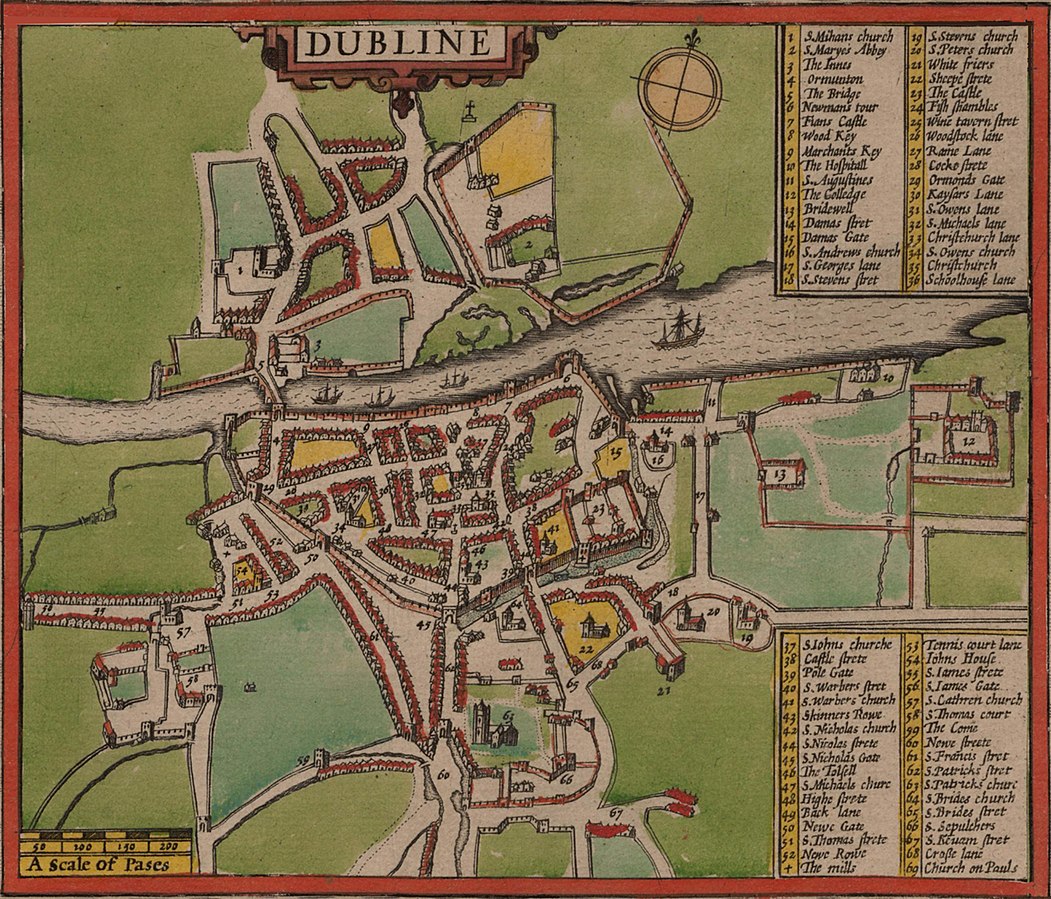The Gunpowder Explosion of 1597 – Craig O Reilly recounts this explosive little known story of Dublin
On 11th March 1597, disaster struck the quays of Dublin when 140 barrels of gunpowder exploded bringing terror and destruction. The blast led to the death of about 1/10th of the population of Dublin at that time. At least 126 people died and many more were injured. Much of the façade of the mercantile buildings was reduced to cinders.
The explosion was an event so tragic in scale that it might be compared to the great fire of London, yet not much is known about the exact cause of the gunpowder igniting.
That morning barrels were being transported along Wood Quay and Merchant’s Quay. The shipment was for the English army who were currently at war with Hugh O’ Neill. There were significant delays in transport that morning, and this led to a build-up causing the explosion.
This build-up of gunpowder along the quays, and the mismanagement of the situation was the responsibility of John Allen, clerk of the storehouse. Allen was engaged in a dispute with workers over payment of wages. Many of the workers at the docks were refusing to work, due to the brutality they were facing. Often, they were being forcibly employed under threat of violence without any pay. The refusal to work by these men, who tended to have Gaelic surnames, was an example of a strike even back in 1597. Their reply when asked about the holdup was that they feared to work in the service of Allen.
It was a hot morning, with unusually dry weather; there were reports later that children had been allowed to roll the barrels along the quays and play with them. It all shows the ineptitude of those in charge.
Some also suspected espionage, perhaps by Allen himself, or other elements, but none of this has been proven. So many of those overseeing the transport perished in the blast, that we will never know the exact cause. It seems that whatever the reason; hot weather, mismanagement, or something else, the situation was ripe for disaster.
What is clear is that around at around one o’ clock there was a flash, and then absolute destruction of life and property. Debris was landing as far off as the suburbs, and body parts were found outside the blast area. The death toll must have had a massive effect on the city of Dublin, which was so much smaller than it is today.
Certainly, a great many people had their future robbed from them. When you look at one of the earliest maps of Dublin, it’s been pointed out by Dr. Colm Lennon in a historical article on the subject, that there seems to be gaps in the city wall indicating damage.
It may also be a key reason for the city’s expansion Eastward. The way buildings were constructed was soon changed; use of timber gave way to brickwork, and Dublin became more urbanised in an Eastward direction, as shown by the establishment of a hospital and college.
The gun-powder explosion of 1597 marks a key point between Dublin’s medieval past and its growth as a modern city. Population would eventually boom, and the city would grow larger than ever. But we may have seen a different development had the explosion never occurred.









